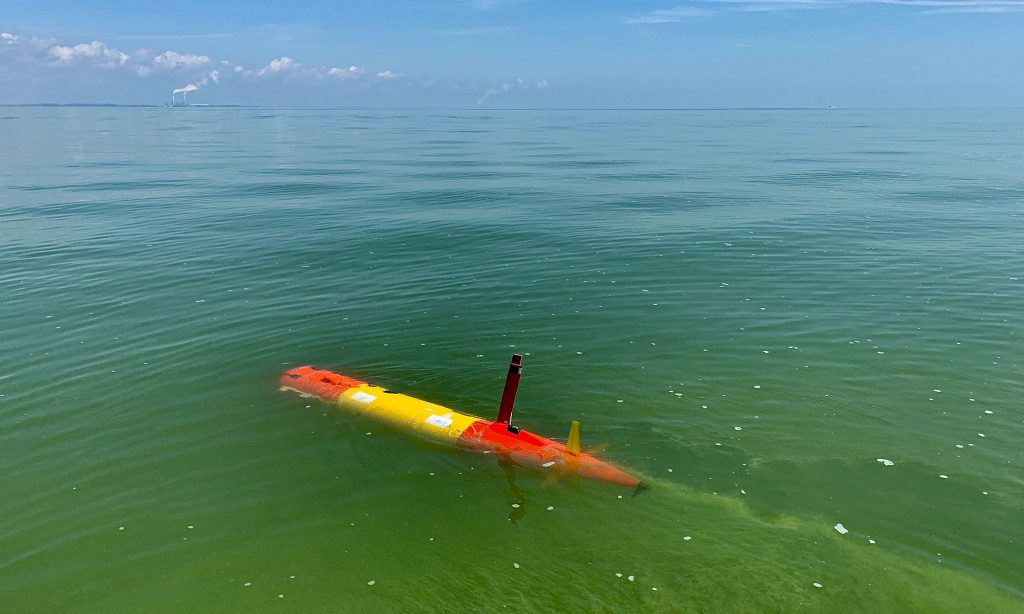
One of Monterey Bay Aquarium Research Institute's (MBARI) long-range autonomous underwater vehicles (LRAUV) makes its way through the green, algae-rich waters of Lake Erie to track the 2019 harmful algal bloom as part of a research collaboration with NOAA. Credit: Ben Yair Raanan, Monterey Bay Aquarium Research Institute (MBARI)
NOAA is announcing $15.2M in funding for harmful algal bloom (HAB) research projects throughout U.S. coastal and Great Lakes waters. HABs can produce toxins or cause other harmful effects that can damage ecosystems, disrupt our seafood supply, impact economies, and threaten human health. Marine and fresh waters of the United States are increasingly impacted by HABs with blooms reported in nearly every state. They cause annual economic losses up to $100 million on average and costs from a single major HAB event can reach tens of millions of dollars. Investments in these projects represent a coordinated effort within the National Ocean Service to advance our nation's ability to observe, monitor, forecast, and manage blooms.
Read more on this story on the National Ocean Service website.
 Official websites use .gov
A .gov website belongs to an official government organization in the United States.
Official websites use .gov
A .gov website belongs to an official government organization in the United States.
 Secure .gov websites use HTTPS
A lock or https:// means you’ve safely connected to the .gov website. Share sensitive information only on official, secure websites.
Secure .gov websites use HTTPS
A lock or https:// means you’ve safely connected to the .gov website. Share sensitive information only on official, secure websites.
